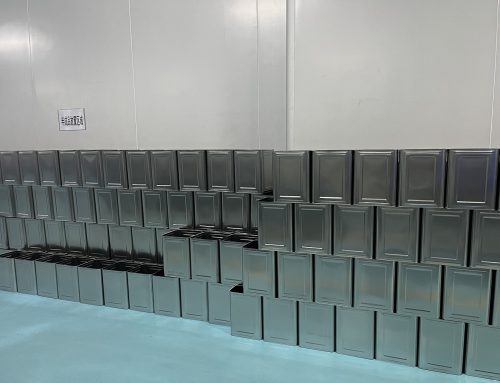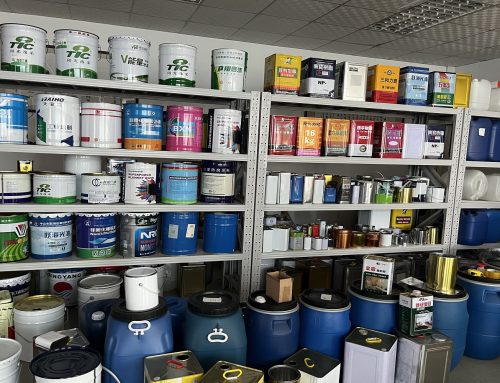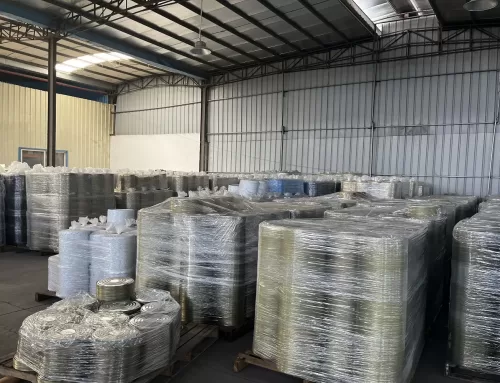Acrylic Esters Coatings
Currently, acrylic resin used for metal surface coating is primarily solvent-based and thermosetting. It can be formulated as both primer enamel and topcoat. However, compared to polyester, acrylic resin has relatively poorer adhesion and flexibility. As a result, the use of acrylic resin as a primer enamel is now less common, and it is predominantly applied as a topcoat for beverage and food cans, as well as various other cans.
Acrylic resin, when combined with a certain proportion of crosslinking resin, forms a glossy and mechanically robust coating under heating conditions. It also exhibits good compatibility with inks. Currently, the reactive functional groups of acrylic resin are mainly provided by introducing monomers such as hydroxyethyl methacrylate, hydroxypropyl ester, epoxy ester, N-hydroxymethylacrylamide, and acrylic acid. These monomers offer active functional groups such as hydroxyl (OH), carboxyl (COOH), and amine (NHCH2OBu), which can react with various trimeric melamine resins, end-capped isocyanates, or the resin’s own active functional groups. The crosslinking occurs during high-temperature baking to form a film with the desired coating properties. For three-piece beverage and food cans, the clearcoat not only requires good adhesion, pencil hardness, and high gloss but also needs to meet the requirements of excellent abrasion resistance, scratch resistance, impact resistance, and maintaining high gloss after water vapor sterilization. To achieve these requirements, the main acrylic resin should have an appropriate molecular weight (Mn: 4000-8000). Resins with excessively low molecular weight exhibit poor adhesion and impact resistance, while excessively high molecular weight results in high resin viscosity, low solid content, and high viscosity after formulation, which is unfavorable for coating application. Furthermore, the resin’s glass transition temperature range should be controlled within 10-70°C. If the resin’s glass transition temperature is too low, it indicates an excessive presence of long-chain alkyl groups, such as butyl acrylate, isooctyl acrylate, etc. These monomers increase the molecular rotational space and act as plasticizers. However, they also decrease the resin’s reaction rate, which is detrimental to the coating’s stain resistance and water vapor resistance, leading to plate sticking issues during can production. On the other hand, excessively high glass transition temperature indicates high cohesion energy, resulting in poor adhesion and impact resistance. It also leads to high coating viscosity, low solid content, and reduced fullness of the clearcoat.

For acrylic resins used in can coatings, most amino resins and end-capped aliphatic isocyanates exhibit excellent miscibility. Amino resins provide good reactivity, stain resistance, hardness, and chemical resistance. Aliphatic isocyanates enhance the toughness and abrasion resistance of the clearcoat. However, this system has poor solvent resistance. Since thermosetting acrylic resins primarily rely on their terminal hydroxyl or methacrylate groups to react with crosslinking agents, different acidic catalysts are selected for catalysis based on the different curing degrees of amino resins. The curing reaction of end-capped isocyanates requires different curing temperatures and metal catalysts with varying activity, depending on the end-capping groups.
Key points for acrylic esters coatings application: Acrylic esters coatings used for cans are primarily used as exterior varnish or edge seam touch-up coatings. The specific characteristics of the coating and the main resin determine some of its special considerations during application.
- Acrylic esters resins have limited molecular stretching performance, and the crosslinking functional groups are distributed along the side chains of the polymer molecules. The resulting interpenetrating network structure formed after heat curing further restricts molecular movement within and between the chains, giving the film certain hardness and toughness. However, if the coating includes highly amino-functional or partially condensed melamine resins, excessively high curing temperatures can make the film brittle and reduce adhesion, leading to film abrasion or peeling issues during can manufacturing, filling, and transportation. It is crucial to control the curing temperature for this type of coating.
- Exterior varnishes require excellent fullness, so the viscosity of the coating and the film thickness during application should be well controlled. If the viscosity is too low, insufficient coating volume may occur, resulting in a thin film and affecting the gloss and fullness of the product. However, it is also important to prevent excessively high viscosity, as it can lead to leveling and adhesion issues




